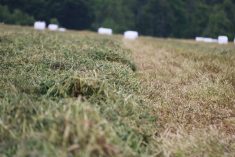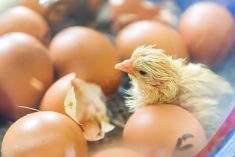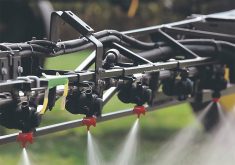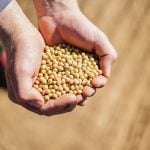Producers in the southwest corner of Alberta officially have confirmation of what they already know – wolves are making frequent meals of their cattle.
A research study by University of Alberta PhD student Andrea Morehouse published in theFrontiers in Ecology and Environmentjournal revealed cattle are most at risk from wolf predation in the grazing season.
“I wasn’t expecting to see quite that amount of cattle in the diet, but after talking to folks down there, it’s perhaps not so surprising,” Morehouse said.
Read Also

Alberta crop insurer says carbon levels can lower costs
AFSC says soil carbon levels could change how much a farmer pays for crop insurance.
The southwest corner of the province comprises just three per cent of Alberta’s land area, but accounts for 37 per cent of livestock predation claims. The area is unique because the mountains quickly descend into prairie, with little of the transitionary terrain found in other parts of the province. As a result, domestic livestock and wild predators are sharing much closer quarters. The land is perfect for grazing cattle, but the area is also of critical importance for bears, wolves and cougars to ensure genetic diversity and long-term survival.
“It is an important corridor in terms of maintaining connectivity between populations of large carnivores in the U.S. and populations farther north in Alberta,” said Morehouse.
Compensation
Beef producers have long suspected wolf packs in the area were hunting cattle, but without a carcass or an obvious kill site, the Alberta government doesn’t compensate for losses. Producers with confirmed kills by wildlife are eligible to receive market value for the lost livestock, and suspected kills by wildlife are eligible to receive half of market value. As well, circumstantial evidence without remains can be considered for compensation, but only at the discretion of the investigator called to the scene.
Morehouse discovered kill sites and carcasses are difficult to find during the grazing season because the cattle aren’t closely supervised and wolves scatter remains during feeding. Most ranchers don’t discover missing cattle until they are counted at roundup before being brought home for the winter. As a result, area producers are experiencing heavy losses with no compensation.
Three wolf packs were studied in a 3,300-square-kilometre research area on the eastern slopes west of Pincher Creek, and four wolves were fitted with GPS collars. The collars were programmed to release location data every hour, which allowed Morehouse to detect and later visit spots where wolves had spent time. As a result, both kill and scavenging sites were studied. Traditionally, wolf researchers have relied on examining scat to study diet, but Morehouse used both techniques.
She found cattle comprised an estimated 73 per cent of the area wolves’ diet during grazing season, including both killed and scavenged cattle, with an average of 17 head killed by each of the three packs every year.
Deadstock attraction
The research also showed that in the winter, the wolves tend to scavenge at bone yards rather than killing cattle outright. The close proximity of the deadstock disposal sites to wintering and calving grounds may pose additional predation risks as wolves and other predators become habituated to the ranching scenario and easy access to food.
Because of new specified risk material disposal regulations introduced in 2007 by the Canadian Food Inspection Agency, livestock disposal companies no longer pick up carcasses for free to be rendered, but charge a fee to recoup the cost of disposing of unrenderable SRM. As a result, deadstock is accumulating in bone yards and predators are gulping down this food supply.
One new tactic to combat the scavenging problem is the use of metal storage bins for deadstock. Morehouse said the technique seems to be working in Cardston County.
Dave Ealey, spokesman for Alberta Sustainable Resource Development, agrees with Morehouse and said mitigation efforts are already reducing the death toll by area wolves.
“We’ve already seen progress in reduction of livestock being killed,” said Ealey. “And while we haven’t been able to connect that with the bins specifically, part of it is a whole variety of practices which we have been working on with operators to try and put in place in the most chronic locations. I was informed the numbers have come down substantially in terms of how much livestock predation there had been.”
Producers in the area are hoping her study will result in some compensation for missing animals, said Morehouse. That would be good for both producers and the wolves, said Reynold Bergen, science director for the Beef Cattle Research Council.
“It’s not just to pay people for their losses,” said Bergen. “It’s to prevent people from taking matters into their own hands – compensation protects the wolves, too. If people are not facing horrendous losses as a result of the wolves, or at least if they’re getting compensated, there wouldn’t be that posse mentality.”
Wolf predation has caused conflict between ranchers and wildlife advocates in some U.S. states, such as in Yellowstone National Park, where wolves have been reintroduced. But the average cattle kill rate south of the border is less than one cow per pack annually.
———
“It’stopreventpeople fromtakingmatters intotheirownhands– compensationprotects thewolvestoo.”
Reynold Bergen CCA














